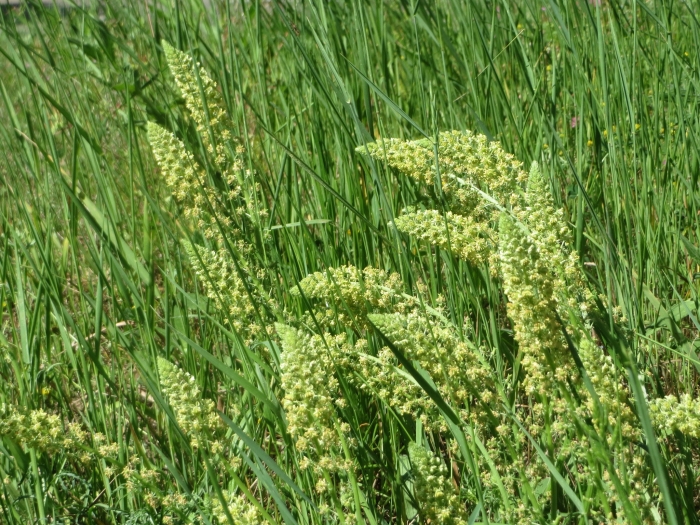Yellow Mignonette
(Reseda lutea)
Yellow Mignonette (Reseda lutea)
/
/

Andreas Rockstein
CC BY-SA 4.0
Image By:
Andreas Rockstein
Recorded By:
Copyright:
CC BY-SA 4.0
Copyright Notice:
Photo by: Andreas Rockstein | License Type: CC BY-SA 4.0 | License URL: http://creativecommons.org/licenses/by-sa/4.0/ | Rights Holder: Andreas Rockstein | Publisher: iNaturalist | Date Created: 2017-05-17T15:38:17-07:00 |

























Estimated Native Range
Summary
Reseda lutea, commonly known as Yellow Mignonette, is an annual to biennial herbaceous plant native to the Mediterranean region, including parts of Eurasia and North Africa. It thrives in open habitats such as grasslands, roadsides, and disturbed areas. Yellow Mignonette reaches a typical height of 18-36 inches (45-90 cm) and spreads about 12 inches (30 cm). The plant features elongated clusters of small, pale yellow flowers that bloom from late spring to early fall, offering a prolonged flowering season. The flowers are modest in size but are valued for their sweet fragrance.
Yellow Mignonette is appreciated for its aromatic qualities and is often used in cottage gardens and wildflower meadows. It can also be planted in borders for its scent and to attract pollinators. This plant prefers full sun to part shade and adapts to a wide range of soil types, though it performs best in well-drained soils. It is drought-tolerant once established, making it suitable for xeriscaping. While generally low-maintenance, it can self-seed prolifically under favorable conditions. Gardeners should be aware of its potential to become weedy or invasive outside its native range and take precautions to prevent unwanted spread.CC BY-SA 4.0
Yellow Mignonette is appreciated for its aromatic qualities and is often used in cottage gardens and wildflower meadows. It can also be planted in borders for its scent and to attract pollinators. This plant prefers full sun to part shade and adapts to a wide range of soil types, though it performs best in well-drained soils. It is drought-tolerant once established, making it suitable for xeriscaping. While generally low-maintenance, it can self-seed prolifically under favorable conditions. Gardeners should be aware of its potential to become weedy or invasive outside its native range and take precautions to prevent unwanted spread.CC BY-SA 4.0
Plant Description
- Plant Type: Herb
- Height: 1.5-3 feet
- Width: 1-1.5 feet
- Growth Rate: Moderate
- Flower Color: Yellow
- Flowering Season: Summer
- Leaf Retention: Semi-deciduous
Growth Requirements
- Sun: Full Sun, Part Shade
- Water: Medium
- Drainage: Medium, Fast
Common Uses
Border Plant, Butterfly Garden, Fragrant, Low Maintenance
Natural Habitat
Open habitats such as grasslands, roadsides, and disturbed areas within the Mediterranean region
Other Names
Common Names: Yellow Mignonette, Dyer’s Rocket, Hasadi, Khuzam, Wild Mignonette
Scientific Names: , Reseda lutea, Reseda crispa, Reseda gallica, Reseda ibicensis, Reseda lecoqii, Reseda lecoqii, Reseda lutea var. vulgaris, Reseda reyeri, Reseda stricta
GBIF Accepted Name: